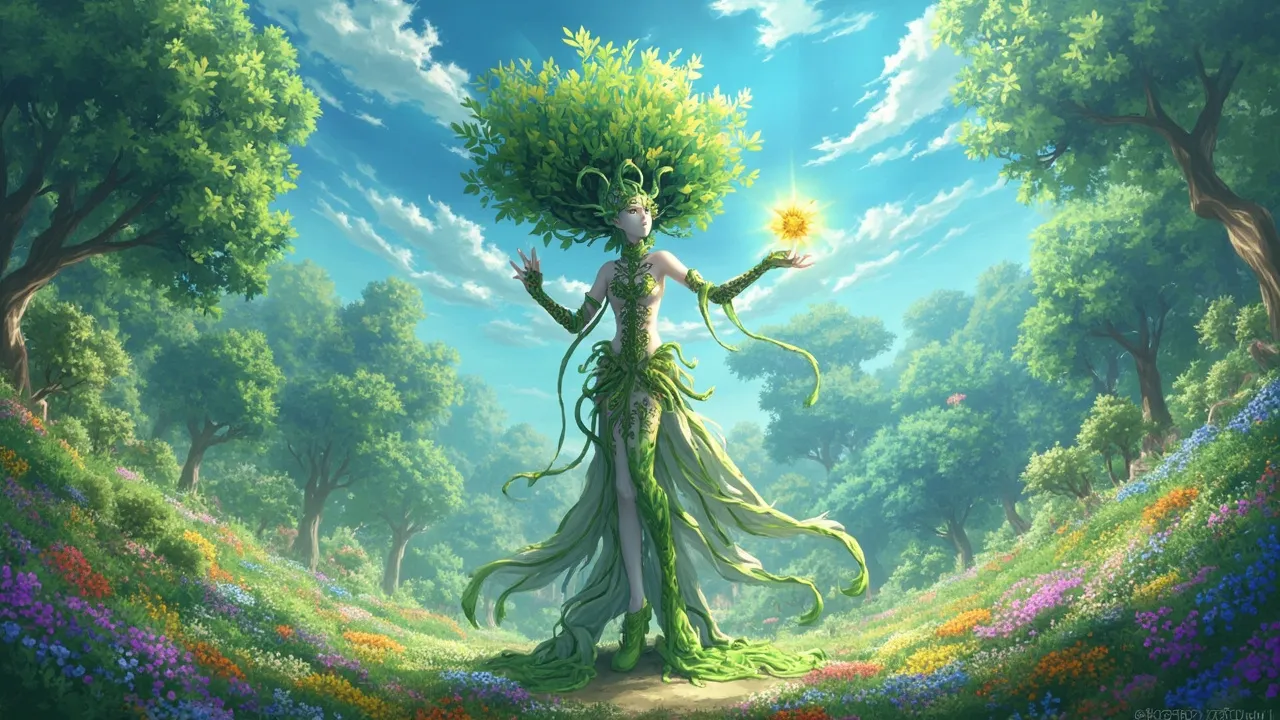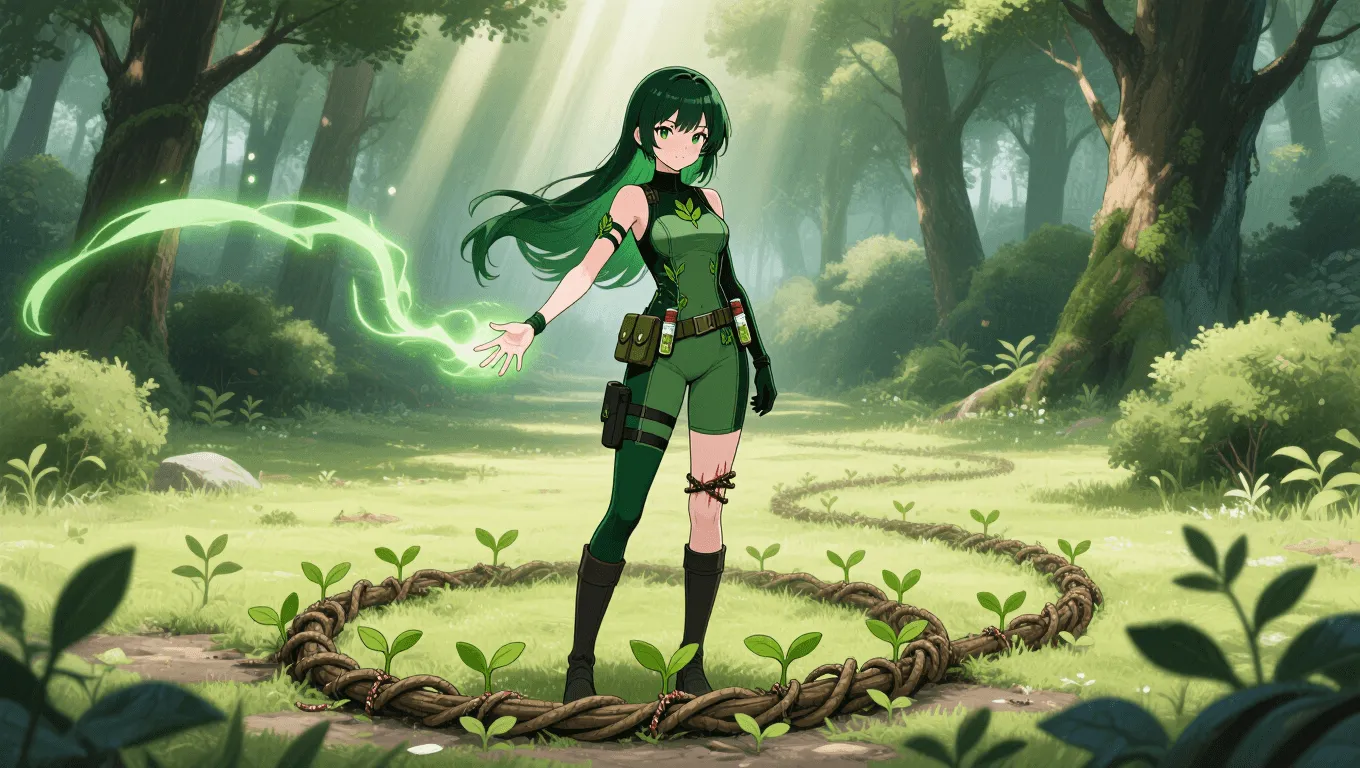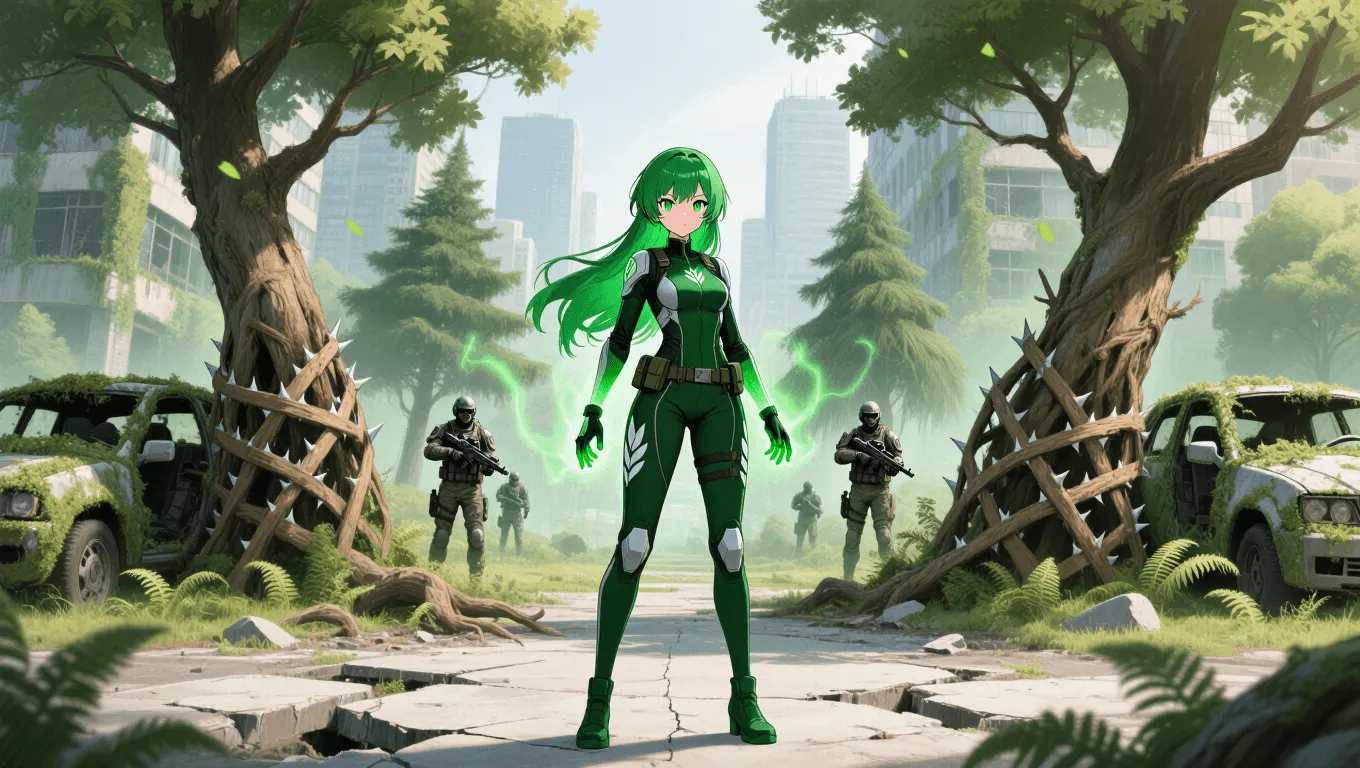Plant Regeneration

Plant Regeneration Video Demo 🎬
Table of Contents
- Plant Regeneration Video Demo 🎬
- What Is Plant Regeneration
- Core Abilities of Plant Regeneration
- Application / Tactical Advantages in Combat
- Level: Level 1 🏙️, Level 2 🌇, Level 3 🌃
- Limitations of Using the Plant Regeneration
- Weakness Against What Other Superpowers
- Synergistic Power Combos
- Known Users
What Is Plant Regeneration
Plant Regeneration is a superpower that accelerates the repair, regrowth, and restoration of plant matter, from tiny seedlings to towering forests. In many interpretations, it also allows a plant-based or plant-empowered character to heal their own body through botanical regeneration, sprouting new tissue the way a tree pushes fresh shoots. This ability sits at the crossroads of nature manipulation and regenerative healing, often overlapping with chlorokinesis, photosynthetic healing, and rapid plant growth. Whether used to revive a scorched grove, knit a living armor of vines, or reconstitute a damaged body of bark and leaves, Plant Regeneration transforms the battlefield and reshapes the environment.
For readers exploring related abilities and variants, see the complete catalog on the superpower wiki and try a new build idea with the random superpower generator.
Core Abilities of Plant Regeneration
Accelerated Flora Repair
Users can mend damaged plants in seconds—resealing bark, re-leafing shattered canopies, and restoring structural integrity. This makes ruined biomes viable again and can undo collateral damage after large-scale conflicts.
Rapid Plant Growth and Reconstitution
Beyond repair, the power jump-starts growth cycles, pushing plants through stages that would take weeks or years. A fallen tree becomes a living barricade; a seed becomes a thorny thicket; a stump regenerates into a trunk with functional branches. This is the backbone of botanical regeneration.
Self-Healing for Plant-Form Users
Characters who are fully or partially plant-based can regenerate limbs, patch punctures, and replace shredded fibers. The process often relies on light, water, and available biomass, functioning like a biological healing factor with a botanical twist.
Tissue Transmutation and Grafting (Advanced)
At higher mastery, users can graft plant tissues, merge species temporarily, or reassign plant energy where it’s most needed—reinforcing roots for stability, thickening leaves for armor, or reshaping vines for mobility. This borders on biokinesis while staying rooted in plant anatomy.
Environmental Cascade
Plant Regeneration can trigger ecosystem-level effects: stabilizing soil, improving air quality, and restoring cover for wildlife. In narrative settings, these cascades add deep strategic value—revived terrain provides stealth, defense, and morale boosts.
Application / Tactical Advantages in Combat
Battlefield Control and Terrain Shaping
Regenerated flora becomes instant terrain. Users can:
-
Re-grow thorn hedges as passive barriers.
-
Restore toppled trees into defensible choke points.
-
Re-knit canopies to obstruct aerial reconnaissance.
This control converts open ground into layered defenses and reshapes encounter flow.
Sustained Defense and Attrition Warfare
Plant armor can self-repair between strikes, while cover regrows as it’s destroyed. Over prolonged engagements, this creates war-of-attrition advantages; enemies must expend resources repeatedly just to maintain lines of sight and movement lanes.
Mobility and Escape Routes
Regrown vines and branches create ladders, swinging lines, and living bridges. Underground, repaired root networks stabilize tunnels and prevent collapses, enabling safe retreats or flanking maneuvers.
Stealth and Concealment
Re-leafed flora offers instant camouflage and sound dampening. Fresh growth can absorb footfalls, hide tracks, and provide scent masking through aromatic leaves.
Support and Sustainment
Healers and ranged units benefit from regrown herb beds, medicinal bark, and nutrient-rich fruits. In plant-form characters, self-healing reduces downtime, keeps pressure on opponents, and preserves scarce medical supplies.
Counter-Siege and Post-Battle Recovery
After bombardments, users can repair orchard lines, rebuild windbreaks, and restore farm plots—key to maintaining logistics in long campaigns. The ability doubles as a civil defense tool that wins hearts and minds.
Level: Level 1 🏙️, Level 2 🌇, Level 3 🌃
Level 1

-
Scope: Small flora (seedlings, shrubs, vines) within a few meters.
-
Speed: Noticeable but not instant; seconds to half a minute for full repair.
-
Self-Healing (if plant-form): Closes minor cuts, repairs frayed fibers; limited limb regrowth.
-
Tactics: Patchy cover creation, quick vine snares, camo refurbishing. Works best as support for ambushes and quick retreats.
-
Risks: Overuse causes fatigue; requires sunlight or ambient plant energy to avoid burnout.
Level 2

-
Scope: Mature trees and dense undergrowth across rooms or city blocks.
-
Speed: Near-instant for small plants; trees reconstitute in seconds.
-
Self-Healing: Rapid limb regeneration, sealing of large wounds, restoration of mobility.
-
Advanced Moves: Grafting compatible species for hybridized defenses; reinforcing root systems to prevent enemy tunneling.
-
Tactics: Terrain denial against vehicles, rapid fortress-building, continuous concealment for squads. Strong in sieges and urban greenspaces.
-
Risks: Depletes local nutrients; prolonged use may cause localized dieback if not balanced with water and soil recovery.
Level 3

-
Scope: Ecosystem-scale regeneration (forests, wetlands) across neighborhoods or entire battlefields.
-
Speed: Dramatically accelerated; shockwave-like regrowth visible across the horizon.
-
Self-Healing: Near-total reconstitution for plant-based bodies, including complex organs and specialized tissues.
-
Advanced Moves: Directed succession (guiding plant communities to desired states), fine-tuned species balance, and temporary armored “golems” grown from reclaimed biomass.
-
Tactics: Strategic bioshaping—turn deserts into green corridors for supply, rebuild coastal mangroves for storm defense, trap armored columns in instant forests.
-
Risks: Massive energy draw; may exhaust the user without abundant sunlight, water, or biomass. Poorly managed regrowth can destabilize non-plant allies’ operations.
Limitations of Using the Plant Regeneration
-
Dependency on Resources: Sunlight, water, minerals, and biomass are the core fuel. In darkness, drought, or nutrient-poor substrates, effects weaken or stall.
-
Species and Compatibility: Not all plants regenerate equally. Some species recover quickly; others require more energy or refuse certain grafts. Forced blends can fail or revert.
-
Time Anchors: While fast, regeneration still follows plant logic. Complex structures—like hardwood trunks or fruiting bodies—may demand staged growth rather than instant perfection.
-
Range and Focus: Large areas dilute precision. High-level users can overextend and lose fine control, causing brittle growth or unhealthy monocultures.
-
Collateral Ecological Impact: Overgrowth can displace native species, clog waterways, or trigger imbalances. Ethical and strategic planning are essential.
-
Interruptibility: Casting can be disrupted by extreme conditions (wildfire fronts, chemical defoliants, vacuum environments) or by powers that negate biological processes.
Weakness Against What Other Superpowers
-
Pyrokinesis / Fire Manipulation: Intense heat carbonizes tissues and sterilizes soil, making immediate regrowth difficult.
-
Cryokinesis / Ice Manipulation: Freezing ruptures plant cells; repeated freeze–thaw cycles cripple regeneration and make tissues brittle.
-
Acid Generation / Corrosive Secretion: Lowers pH and dissolves cellulose-lignin structures beyond quick repair.
-
Toxin Manipulation / Blight Induction: Pathogens and tailored phytotoxins sabotage regenerative pathways, forcing the user to purge infections before healing can proceed.
-
Desiccation / Wind Domination: Drying winds and humidity control pull water from tissues, stalling regrowth and cracking bark.
-
Darkness Manipulation / Shadow Fields: Suppresses photosynthetic healing, especially indoors or underground without auxiliary light.
-
Power Nullification / Anti-Biology Fields: Directly disrupts the biochemical triggers that drive botanical regeneration.
-
Salt and Heavy-Metal Manipulation: Soil salinity and contamination impair roots, block nutrient uptake, and cause long-term dieback.
Synergistic Power Combos
-
Chlorokinesis + Plant Regeneration: Regrow plants and immediately command them into shields, snares, or siege engines.
-
Hydrokinesis + Plant Regeneration: Supply water on demand, prevent desiccation, and supercharge growth in arid zones.
-
Geokinesis / Earth Manipulation: Aerate soils, restore minerals, and stabilize slopes so newly regenerated forests take hold.
-
Solar Manipulation / Light Projection: Provide artificial sunlight for photosynthetic healing at night or indoors.
-
Aromakinesis / Pollen Control: Direct pollen and plant volatiles for crowd control while regrown flora pumps fresh supplies.
-
Healing / Biokinesis: Combine general biological healing with botanical regrowth to treat hybrid or symbiotic bodies.
-
Weather Control: Call rain for hydration, diffuse heat waves that would scorch new growth, and shield sprouts with cloud cover.
-
Shielding / Force Constructs: Protect fragile early-stage regrowth while it hardens into durable barriers.
Known Users
-
Poison Ivy (Pamela Isley) — A classic eco-antihero whose mastery of plant life often includes restoring and amplifying growth. Learn more about Poison Ivy.
-
Swamp Thing (Alec Holland) — An avatar of the Green who regenerates entire bodies and ecosystems.
-
Groot — A sentient tree-like being noted for limb regrowth and rapid wooden reconstruction.
-
Floronic Man (Jason Woodrue) — A botanist-turned-plant entity capable of extreme regenerative feats.
-
Black Tom Cassidy (mutated era) — Known in later iterations for channeling plant life, sometimes exhibiting accelerated growth and repair effects.
-
Man-Thing — A swamp guardian whose plant-mass body demonstrates unusual regenerative resilience.
For additional abilities that pair well with botanical builds and narrative frameworks, browse the broader superpower wiki or roll a fresh concept with the random superpower generator.
